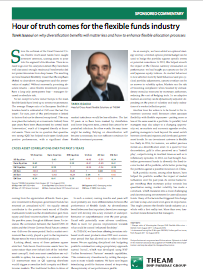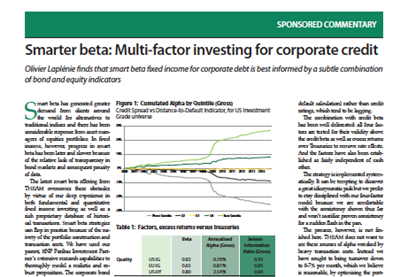Content (7)
-
White papers
Factor investing for government bonds beyond duration, currency and credit risk timing
The traditional investment approaches employed to generate active returns in the government bonds market focus essentially on actively timing duration, credit risk or currency exposure.
-
White papers
Factor investing is not an asset class, it’s a solution-oriented philosophy
The naïve approach to single factor investing is to simply select the stocks that have the desired characteristic and to find a weighting scheme that doesn’t raise too many problems in terms of liquidity and diversification, i.e. usually linked to some extent to the original market capitalisation.
-
White papers
Hour of truth comes for the flexible funds industry
Since the outbreak of the Great Financial Crisis, flexible multi-asset funds have caught investors’ attention, causing assets to pour into the segment’s blockbusters. There is no need to go over the catalysts in detail; they have been well discussed enough: traditional benchmarks did not protect investors from deep losses.
-
White papers
Smarter beta: Multi-factor investing for corporate credit
Olivier Laplénie finds that smart beta fixed income for corporate debt is best informed by a subtle combination of bond and equity indicators
-
White papers
The flexibility of factor investing facilitates the creation of low carbon active strategies
In a research article published in 2012 in the Journal of Portfolio Management, entitled “Demystifying risk-based strategies: A simple alpha plus beta description”, BNP Paribas Investment Partners was already demonstrating that the excess return of traditional smart-beta strategies could be explained by their factorial exposures.
-
White papers
Some smart beta approaches are smarter than others
The ‘low-risk anomaly’ has been around since at least 1926. Empirical evidence first found over 40 years ago shows that low-volatility investment portfolios tend to produce higher returns than riskier portfolios




